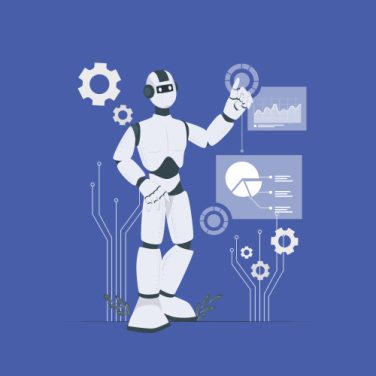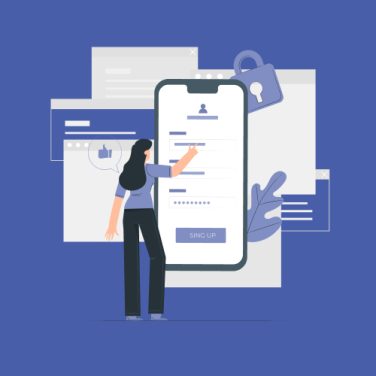Employee engagement software centralises communication, recognition, feedback and analytics into a unified platform.
Trends such as remote work, mobile-first access and AI-driven personalisation are driving rapid adoption of employee engagement software.
With hybrid and fully remote teams becoming common, mobile apps ensure employees can receive announcements, submit feedback, or acknowledge peers from any location. AI analytics sift through survey responses to surface emerging patterns and at-risk groups.
Adopting employee engagement software leads to measurable improvements in morale, retention, and productivity. Organisations using continuous feedback loops report up to 20% higher performance and a 15% reduction in turnover.
Integrating recognition and rewards into daily workflows also fosters a culture of appreciation and motivates staff to stay aligned with business goals.
TL;DR: Key takeaways
- Employee engagement software centralises surveys, recognition, analytics and communication in one platform, enabling HR teams to act on feedback promptly.
- Look for features like pulse surveys, AI analytics, mobile self-service apps and integration capabilities with existing HRIS and collaboration tools to maximise adoption.
- Evaluate vendors on usability, cost structure, freemium or employee engagement software free options, feature depth and scalability to suit small, mid-market or enterprise environments.
- Leverage MiHCM’s unified platform for end-to-end engagement and HR operations—explore the ultimate guide to HR digital transformation for insights on integrating engagement and payroll workflows.
The four Es of Engagement
Employee engagement software delivers four essential elements—Energy, Engagement, Empowerment, and Execution. These tools harness continuous surveys, real-time feedback loops, social recognition feeds and analytics dashboards to foster an energised workforce.
- Energy captures the overall enthusiasm of teams.
- Engagement measures the emotional connection to work and culture.
- Empowerment provides employees self-service access to insights and rewards.
- Execution focuses on translating feedback into actionable plans.
Direct benefits of these platforms include higher retention, improved performance and enhanced company culture.
By enabling regular pulse surveys, HR leaders can pinpoint areas of stress or disengagement and intervene early. Recognition modules spotlight achievements, reinforcing positive behaviours and driving peer-to-peer encouragement.
Benchmarking and metrics
Robust analytics modules benchmark engagement over time and against industry standards. Key metrics include eNPS scores, survey response rates, recognition frequency and sentiment trends.
Customised dashboards track progress toward engagement goals, highlighting high-performing teams and spotlighting at-risk departments. Continuous monitoring empowers leadership to allocate resources effectively and refine engagement strategies.
In sum, employee engagement software platforms integrate core functions—surveys, feedback loops, recognition, analytics—to deliver a holistic view of workforce sentiment. Organisations that leverage these capabilities often see a 10–20% boost in productivity and significant declines in regrettable attrition.
Key features to look for in employee engagement software
Selecting the right employee engagement software requires evaluating critical features that drive adoption, insights and actionable outcomes. Below are core capabilities to prioritise:
Surveys and feedback mechanisms:
Pulse survey creation and automated distribution lie at the heart of any engagement platform. Look for tools that offer:
- Customisable pulse surveys: Pre-built templates aligned with psychological research and the flexibility to tailor questions to organisational needs.
- Automated scheduling: Recurring survey sends with reminders and anonymous response collection to ensure high participation rates.
- Multi-channel delivery: Support for email, SMS, mobile app notifications and in-platform prompts to reach deskless or remote employees.
- 360° feedback loops: Integration with performance reviews and one-on-one check-ins to close the feedback cycle and track follow-up actions.
MiHCM’s Pulse Surveys and Feedback Tools feature streamlines survey creation, distribution and analysis within a single mobile-friendly interface, ensuring continuous sentiment tracking.
AI-driven insights
Advanced analytics powered by AI transform raw feedback into predictive, prescriptive insights:
- SmartAssist AI Analytics: Identifies emerging engagement gaps, flags at-risk teams and correlates sentiment with productivity metrics.
- Natural Language Processing: Summarises open-ended comments, surfaces common themes and suggests prioritised actions.
- Real-time dashboards: Visual heatmaps and trend charts update dynamically as survey responses arrive, empowering managers with immediate visibility.
- Predictive alerts: Automated notifications highlight significant drops in engagement scores for proactive interventions.
These capabilities help HR leaders unlock deeper insights into productivity and well-being, driving targeted improvements.
Meeting and task management
Integration with calendars and task planning ensures engagement doesn’t operate in isolation. Features to consider include:
- Automated meeting reminders synced with Outlook and Microsoft Planner to follow up on feedback.
- Action-tracking dashboards linking survey outcomes to specific tasks and owner assignments.
- Geo-fenced attendance checkpoints for mobile clock-in/out, capturing real-time presence data.
Combining these modules ensures a seamless user experience across devices, reduces administrative overhead and embeds engagement into daily workflows.
Evaluation criteria and selection process
When evaluating employee engagement software, organisations should weigh multiple factors to align the solution with business objectives and resource constraints:
- Usability: An intuitive UI reduces training time and boosts adoption. Assess dashboards, mobile app interfaces and administrator consoles for simplicity.
- Cost structure: Compare subscription tiers, freemium or employee engagement software free options and the total cost of ownership, including implementation and support fees.
- Scalability: Ensure the platform can grow from small teams to enterprise-level deployments without significant reconfiguration.
- Integration: Look for APIs and pre-built connectors with HRIS, payroll, collaboration tools and identity providers to streamline data flows and compliance.
- Support and security: Verify SLAs, data privacy certifications (e.g., GDPR, SOC 2) and local labour law compliance modules.
- Compliance with local labour laws: Out-of-the-box adherence to regional regulations simplifies reporting and safeguards against legal risk.
- Mobile attendance tracking: Geo-fenced clock-in/out and biometric options ensure accurate presence records for deskless workers.
Key benefits of selecting a well-matched vendor include reduced administrative overhead through seamless integrations and the ability to choose a cost-effective plan aligned to company size and complexity.
Leveraging MiHCM’s integrated engagement capabilities
MiHCM delivers a unified suite that bridges employee engagement software and core HR operations.
By deploying MiHCM Lite or MiHCM Enterprise, organisations can launch pulse surveys, deliver company announcements, and capture feedback—all within the same system that manages payroll and benefits.
- Enhanced employee engagement: The mobile-first interface promotes peer recognition, news feeds and direct messaging, fostering a positive workplace culture across locations.
- Employee well-being monitoring: Real-time mood tracking and check-in prompts enable managers to spot early warning signs of burnout and stress, ensuring timely support interventions.
- SmartAssist AI Analytics: Predictive models analyse survey results to identify engagement gaps, predict turnover risk and recommend targeted actions.
Integrating engagement data with payroll and HR analytics creates a holistic picture of workforce health. Linking recognition frequency, sentiment trends and attendance records uncovers correlations between well-being and operational metrics.
This end-to-end approach streamlines workflows, reduces data silos and empowers HR leaders with comprehensive insights to drive retention and performance.
Leveraging MiHCM’s integrated engagement capabilities
MiHCM delivers a unified suite that bridges employee engagement software and core HR operations.
By deploying MiHCM Lite or MiHCM Enterprise, organisations can launch pulse surveys, deliver company announcements, and capture feedback—all within the same system that manages payroll and benefits.
- Enhanced employee engagement: The mobile-first interface promotes peer recognition, news feeds and direct messaging, fostering a positive workplace culture across locations.
- Employee well-being monitoring: Real-time mood tracking and check-in prompts enable managers to spot early warning signs of burnout and stress, ensuring timely support interventions.
- SmartAssist AI Analytics: Predictive models analyse survey results to identify engagement gaps, predict turnover risk and recommend targeted actions.
Integrating engagement data with payroll and HR analytics creates a holistic picture of workforce health. Linking recognition frequency, sentiment trends and attendance records uncovers correlations between well-being and operational metrics.
This end-to-end approach streamlines workflows, reduces data silos and empowers HR leaders with comprehensive insights to drive retention and performance.
Implementation best practices for successful rollout
- Secure executive sponsorship and define clear objectives
Align engagement initiatives with strategic business goals. Obtain buy-in from leadership to ensure budget, resources and visibility throughout rollout. - Communicate value to employees and provide training
Develop a communications plan highlighting benefits of the new platform. Host live demos and create quick-start guides to accelerate adoption. - Pilot with small teams, gather feedback, iterate
Launch a controlled pilot group to validate configurations, survey cadence and recognition workflows. Use feedback to refine processes before a full launch. - Set up regular reporting and align KPIs with business goals
Define success metrics such as eNPS increase, survey participation, recognition frequency and turnover rates. Review dashboards monthly to track progress. - Ensure cross-departmental collaboration between HR, IT and managers
Form a governance team to oversee integrations, data privacy compliance and change management. Regular check-ins ensure alignment and timely issue resolution.
Mobile engagement solutions and integration
Mobile engagement apps offer real-time access to surveys, recognition features and operational tools, boosting participation among on-the-go staff.
Geo-fenced clock-in/out and biometric authentication ensure accurate attendance records for remote and hybrid teams. Location-aware reminders prompt employees to complete pulse surveys at shift start or end.
- Workspace reservation
Hybrid teams can book desks, meeting rooms and collaboration spaces directly from the mobile app, reducing friction and optimising facility usage. - Meeting and task management
Integrated with Outlook Calendar and Microsoft Planner, automatic task reminders surface follow-ups from one-on-one meetings and survey action items. - Mobile attendance tracking
Real-time presence data syncs with HRIS to verify hours worked, driving accurate payroll processing and compliance with labour regulations.
Cost-benefit analysis and ROI considerations
| Category | Benefit | Estimated Value |
|---|---|---|
| Reduced turnover | Lower recruitment/training costs | Up to 20% cost savings |
| Time savings | Automated reporting & surveys | 50% reduction in manual hours |
| Prevention value | Early detection of disengagement | Avoids $500K+ in exit costs |
| Productivity uplift | Improved performance & morale | 10–15% increase output |
| ROI timeline | Break-even period | 6–12 months |
Investing in engagement software delivers both direct and indirect financial returns. Reduced turnover saves significant recruitment and training expenses, while automated survey and reporting workflows free HR teams to focus on strategic initiatives. Predictive analytics and early alert systems help prevent disengagement before it escalates into costly attrition.
Organisations typically achieve return on investment within 6-12 months, driven by productivity gains and lower administrative overhead. For many, the platform’s cost is offset by just a few avoided turnover cases and improved operational efficiency.
Future trends in employee engagement technology
- AI-Powered Predictive Analytics
Advancements in machine learning will enable platforms to forecast disengagement risks weeks in advance, allowing proactive interventions and personalised coaching. - Sentiment Analysis and NLP
Deeper natural language processing will analyse open-ended feedback across multiple channels, identifying nuanced themes and emotional tones to guide leadership decisions. - Virtual & Augmented Reality Recognition
Immersive experiences—such as virtual award ceremonies and AR badges—will elevate peer recognition, fostering stronger cultural connections in distributed teams. - DEI Metrics and Personalised Paths
Enhanced diversity, equity and inclusion tracking will offer personalised engagement journeys, ensuring underrepresented groups receive tailored support and development opportunities.
As the employee engagement landscape evolves, technology will increasingly blend with core HR operations, delivering seamless experiences that tie recognition, feedback and performance management into a single workflow.
Frequently asked questions
What is employee engagement software?
How does it differ from employee recognition platforms?
When should an organisation implement engagement software?
How do companies measure the effectiveness of engagement tools?
Key metrics include eNPS (employee Net Promoter Score), survey participation rates, frequency of recognition events and sentiment trend analysis. Benchmark comparisons against industry standards gauge relative performance.
What are pulse surveys and benchmarks?
Pulse surveys are short, frequent questionnaires that capture real-time sentiment, while benchmarks provide comparative data from industry and regional aggregates, helping organisations contextualise their engagement scores.



